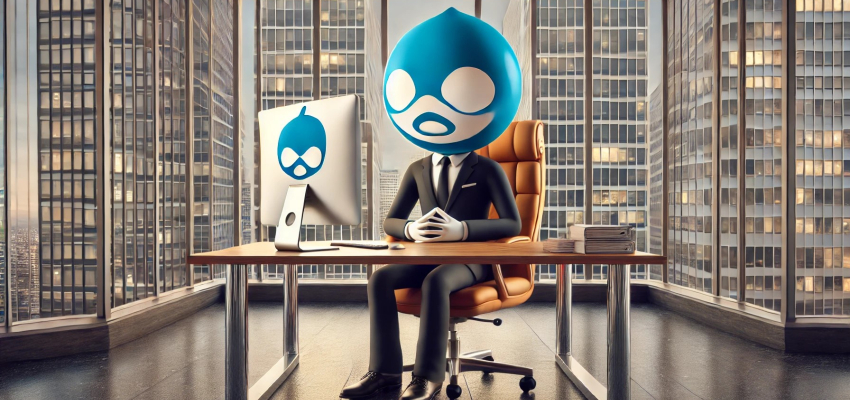Why Do Big Brands Choose Drupal?

In today’s rapidly evolving digital landscape, maintaining a simple online presence is no longer sufficient for large corporations. Instead, companies need flexible, dynamic, and scalable platforms that keep up with the demands of a modern audience. Drupal has become the go-to choice for many global brands that need reliable, secure, and highly customizable solutions to meet their digital transformation needs. But why exactly are major organizations like Unicef, Tesla, and the Grammy Awards turning to Drupal?
1. API-First Approach: Seamless Integration Across Platforms
Today’s enterprises no longer rely solely on a website; they need a platform that can deliver content to various devices and channels. Drupal’s API-first approach is designed with this in mind. This enables seamless integration across mobile apps, social media, IoT devices, and other digital platforms.
Brands like The Weather Channel use Drupal to distribute meteorological data through multiple platforms, offering a consistent user experience on web, mobile, and connected devices. Drupal’s API-first approach ensures that content is managed centrally but can be distributed wherever needed.
2. Headless CMS for Dynamic and Flexible Solutions
Drupal’s headless CMS architecture allows developers to separate the front-end and back-end systems. This flexibility enables the use of modern front-end frameworks such as React, Vue.js, and Angular while maintaining centralized content management in Drupal.
For instance, the Louvre Museum uses Drupal’s headless capabilities to deliver rich, dynamic content across multiple platforms. This provides a more interactive and engaging experience for users while allowing content managers to keep everything up to date easily.
3. Scalability for High Traffic and Large Projects
Large brands require platforms that can handle massive amounts of traffic without compromising performance. Drupal’s scalable infrastructure is built to manage complex, high-traffic websites, allowing brands to expand and evolve without performance issues.
A prime example is the Grammy Awards website, which uses Drupal to handle millions of visitors each year during the event. Drupal’s scalability allows the site to perform consistently even under high traffic loads.
4. Security: Corporate-Level Protection
Security is a top priority for any large corporation, especially those managing sensitive data. Drupal has a reputation for security and is trusted by organizations like Tesla to safeguard their digital assets. Drupal’s built-in security features include strict access control, role-based permissions, and regular security updates.
Drupal’s security architecture has made it the platform of choice for government websites, including the White House and other high-profile institutions, proving its reliability in safeguarding against cyber threats.
5. Multilingual Capabilities for Global Reach
Global brands need to communicate effectively with diverse audiences. Drupal’s multilingual support allows organizations to deliver content in multiple languages easily. Content managers can manage translations, ensuring that each language receives the same high-quality user experience.
Organizations like Unicef leverage Drupal’s multilingual capabilities to reach audiences across the world. With support for multiple languages, Drupal enables brands to operate globally with consistent messaging.
6. Flexibility and Customization for Unique Digital Experiences
Every brand has unique needs, and Drupal’s modular system allows for full customization. Whether a company needs specialized features or integrations, Drupal’s flexibility makes it possible to tailor the platform to suit specific business requirements.
Companies like Pfizer utilize Drupal to create custom content management systems that optimize their workflows and provide unique digital experiences for their users.
Conclusion: Why Big Brands Choose Drupal
Big brands opt for Drupal because it goes beyond offering a simple CMS—it provides a flexible, secure, and scalable solution designed for today’s digital needs. From API-first integration and headless CMS architecture to enterprise-level security and global multilingual capabilities, Drupal ensures that companies can meet their digital transformation goals while maintaining flexibility and efficiency.
For organizations looking to future-proof their digital strategies, Drupal remains a trusted partner.
